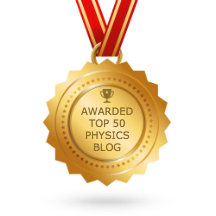 |
Biomagnetism: The First Sixty Years.
|
A couple years ago, I published a review article titled
“
Biomagnetism: The First Sixty Years.
” I wrote about that article
before in this blog, but I thought it was time for an update. The paper is popular: according to
Google Scholar it has been cited 28 times in two years, which is more citations than any other of my publications in the last decade. I remember working on this paper because it was my Covid project. That year I got
Covid for the first—and, so far, only—time. I quarantined myself in our upstairs bedroom, wore a mask, and somehow avoided infecting my wife. I remember having little to do except work on my biomagnetism review.
As a treat, I thought I would reproduce one of the initial sections of the article (references removed) about the first measurement of the
magnetocardiogram.
Russ Hobbie and I talk about the MCG in Chapter 8 of
Intermediate Physics for Medicine and Biology. This excerpt goes into more detail about how MCG measurements began. Enjoy!
2.1. The First Measurement of the Magnetocardiogram
In 1963, Gerhard Baule and Richard McFee first measured the magnetic field generated
by the human body. Working in a field in Syracuse, New York, they recorded the
magnetic field of the heart: the magnetocardiogram (MCG). To sense the signal, they
wound two million turns of wire around a dumbbell-shaped ferrite core that responded
to the changing magnetic field by electromagnetic induction. The induced voltage in the
pickup coil was detected with a low-noise amplifier.
The ferrite core was about one-third of a meter long, so the magnetic field was not
measured at a single point above the chest, but instead was averaged over the entire coil.
One question repeatedly examined in this review is spatial resolution. Small detectors are
often noisy and large detectors integrate over the area, creating a trade-off between spatial
resolution and the signal-to-noise ratio.
The heart’s magnetic field is tiny, on the order of 50–100 pT (Figure 1). A picotesla (pT)
is less than a millionth of a millionth as strong as the magnetic field in a magnetic resonance
imaging machine. The magnetic field of the earth is about 30,000,000 pT (Figure 1), and
the only reason it does not obscure the heart’s field is that the earth’s field is static. That
is not strictly true. The earth’s field varies slightly over time, which causes geomagnetic
noise that tends to mask the magnetocardiogram (Figure 1). Moreover, even a perfectly
static geomagnetic field would influence the MCG if the pickup coil slightly vibrated. A
key challenge in biomagnetic recordings, and a major theme in this review, is the battle to
lower the noise enough so the signal is detectable
 |
| Figure 1. Noise sources in biomagnetism. |
Most laboratories contain stray magnetic fields from sources such as electronic equipment,
elevators, or passing cars (Figure 1). Baule and McFee avoided much of this noise
by performing their experiments at a remote location. Even so, they had to filter out the
ubiquitous 60 Hz magnetic field arising from electrical power distribution. A magnetic
field changing at 60 Hz is a particular nuisance for biomagnetism because the magnetic
field typically exists in a frequency band extending from 1 Hz (1 s between heartbeats) to
1000 Hz (1 ms rise time of a nerve or muscle action potential).
One limitation of a metal pickup coil is the thermal currents in the winding due to
the random motion of electrons, creating extraneous magnetic fields caused by the measuring
device itself. The ultimate source of noise is thermal currents in the body, but fortunately,
their magnetic field is minuscule (Figure 1).
Baule and McFee suppressed background noise by subtracting the output of two
pickup coils. A distant source of noise gave the same signal in both coils and did not
contribute to their difference. One coil was placed over the heart, and the magnetocardiogram
was larger there and did not cancel out. The two coils formed a rudimentary type of
gradiometer (Figure 2).
The magnetocardiogram resembled the electrocardiogram (ECG) sensed by electrodes
attached to the skin. Baule and McFee speculated that the MCG might contain different
information than the ECG, another idea that reappears throughout this review. In a followup
article, they theoretically calculated the magnetic field produced by the heart. The
interplay between theory and experiments is yet one more subject that frequently arises in
this article.
 |
| Figure 2. Types of gradiometers. |






No comments:
Post a Comment